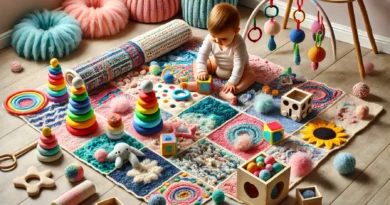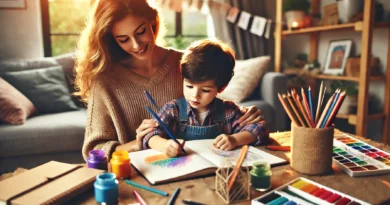Children’s Book Crafts: Bring Your Favorite Stories to Life
Childhood is marked by discovery, imagination, and lots of fantasy. Children’s books are part of this magical universe, and when combined with crafts, they gain even more power and meaning. Creating hands-on activities based on children’s favorite stories is a powerful way to stimulate creativity, motor skills, and the emotional bond between adults and little ones.
Children’s book crafts go beyond a simple pastime. They allow the child to dive even deeper into the world of the story. By turning characters, settings, and story elements into tangible objects, reading stops being just visual or auditory and becomes sensory. It’s as if each page of the book jumps out and takes shape in the child’s hands.
This kind of activity can also be an educational tool. Teachers and educators can use children’s book crafts to work on themes such as empathy, diversity, conflict resolution, and even school subjects. At home, parents can find in this practice a fun way to share quality time with their kids.
1. Why invest in children’s book crafts?
In addition to being a fun activity, crafts based on stories help children retain the content they read. By “playing to make” the book, they relive each scene, repeat lines, and reconstruct environments and characters. This strengthens memory, reading comprehension, and storytelling skills—essential abilities for academic and social development.
Another strong point is the stimulation of imagination. A simple paper roll can become a dragon, a castle, or a rocket, depending on the story and the creativity involved. This creative freedom develops critical thinking and autonomy, and it also allows the child to express themselves artistically.
And the best part: it doesn’t have to be expensive. Simple materials like colored paper, glue, blunt scissors, popsicle sticks, cardboard boxes, and fabric scraps are enough to create true works of art. What matters most is involving the child in the process and letting them participate actively in the creation.
2. Practical ideas to bring stories to life
Here are some ideas that work well with the most popular children’s books—and that can also be adapted to any other story.
Puppet theater with book characters
After reading a story with the child, suggest making the main characters using popsicle sticks, cardstock, or felt. Each one can have eyes, clothes, and accessories. Then, you can build a small cardboard stage and reenact the story. This activity works on speech, memory, and interaction.
Handmade sensory book
Perfect for young children. Choose a simple story and create pages with different materials: sandpaper to represent rough ground, cotton for clouds, soft fabric for animals. Besides being fun, this type of children’s book craft stimulates touch and helps with the recognition of textures and objects.
Story box
Take a shoebox and turn it into a “magic box.” Inside, place small objects that represent elements from the book: an apple, a mirror, a crown, a red cape… When the box is opened, the child can tell the story using the objects as props. It works as an interactive narrative.
3. How to make a mini handmade book with children
Creating a mini book with a child is a fun and educational way to work on narrative structure—beginning, middle, and end—while reinforcing a love for reading and writing. Here’s a simple step-by-step guide:
Materials needed:
- Sheets of printer or recycled paper
- Colored pencils or markers
- Glue
- Scissors
- Stapler or thread and needle for binding
Step by step:
- Fold the sheets in half to form the “little book.”
- Ask the child to choose a story they like—it can be a known one or one they invent.
- On each page, they should write (or dictate for an adult to write) part of the story.
- Then comes the illustration part: drawings, collages, and even textures can go here.
- At the end, staple or sew the mini book. It’s ready!
This activity can be done at home, in school, or even in reading groups. Each child can present their book to their peers, creating a rich moment of sharing and valuing individual production.
4. Tips to make the craft even more engaging
- Involve the child from the story selection to the final touches.
- Value their participation, even if the result isn’t “perfect.”
- Use music, videos, or other media as additional inspiration.
- Record the process: take pictures, make videos, and build an artisanal portfolio for the child.
- Create a “handmade library” at home with the books made.
5. Conclusion: stories that take shape, affection, and memory
More than a creative activity, children’s book crafts are a bridge between imagination and reality. They turn stories into living experiences, connecting children with reading in a playful and affectionate way. And most importantly: these shared moments become memories that last a lifetime.
If you want to encourage reading, strengthen bonds, and stimulate children’s creativity, try bringing stories to life with your own hands. After all, there’s no greater magic than seeing a child’s eyes light up when their favorite story comes to life—and takes shape.



